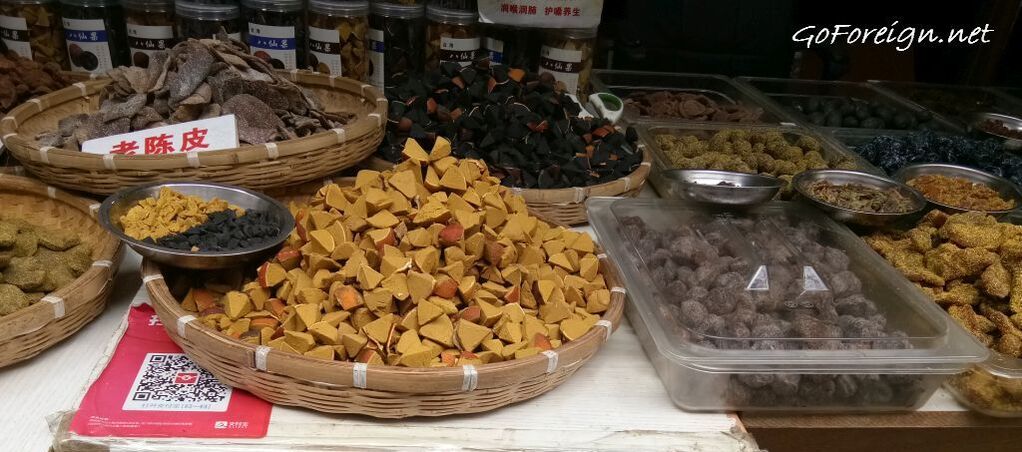Eight Immortals Fruit (八仙果 Baxian Guo)– It’s a pulp made of dried orange peels and various herbs. The pulp is stuffed into fresh pomelo, grapefruit or bergamot skin (it really does look like a fruit – thus the name). Later it’s being dried and cut into pieces. Despite being sold in candy shops, it is actually considered to be a traditional Chinese medicine (which I didn’t know when buying it). It’s mostly used to treat cough and sore throat, as well as a remedy for nausea and indigestion. According to various descriptions, you shouldn’t eat more than 5-6 pieces a day though, since with higher doses it might cause diarrhoea (and believe me – it does).
Ingredients:
1. Tangerine peel (陈皮) – according to TCM (traditional Chinese Medicine) it’s supposed to help for nausea and indigestion.
2. Pinellia ternata – That plant is a very common ingredient of traditional Chinese drugs (even though unprocessed – the plant can have toxic properties). It is also the one, responsible for the anti-cough properties of the eight immortals fruit. It is probably due to the fact that Pinnelia ternata is rich in ephedrine alkaloids (a chemical that is a common ingredient for cough and cold medicines). Ephedrine is also considered to be a stimulant – that’s why it shouldn’t be ingested by children, people with hypertension and cardio-vascular problems.
3. China root (Wolfiporia extensa, Poria cocos, or chin. Fuling [茯苓]) – it’s a kind of fungus that belongs to the Polyporaceae family. Basically, those are the fungi that tend to grow on trees (this particular species is found on pine roots). In traditional medicine it is used to treat insomnia, indigestion and as a diuretic. Nowadays Poria cocos became subject of many research due to the presence of triterpenes (especially pachymic acid) which are thought to have cancer growth inhibition properties. So far it was only confirmed in animal models and in vitro (no clinical trials). There was also research done on triterpenes sedative and antioxidant properties. It is scientifically possible then, that this fungus truly can have positive effect on insomnia.
4. Liquorice root – it’s a root from Glycyrrhiza glabra. In traditional Chinese medicine it has very wide spectrum of usage. Scientifically, it has been proven that it poses anti-inflammatory and anti-viral properties due to the presence of glycyrrhizic acid.
5. Borneol (menthol or mint) – different manufacturers use slightly different ingredients. Some use natural mint, which has been long known to relive indigestion symptoms. Some of the manufacturers however instead of the herb use menthol or borneol (those are the chemicals that give the ‘minty’ flavour to the eight immortals fruit. Borneol is a terpene that can be found in camphor tree. It has anti-inflammatory and analgesic properties (study on mice).
So… Does it work?
Personally, I haven't tried to use it for cough or sore throat, so I can’t vouch for its effectiveness in this regard. If you look at the chemicals that are found in the herbs used to made Eight Immortals Fruit, it’s scientifically possible that it can work to some extent. I can tell from experience though, that it definitely helps for nausea and indigestion.
Putting medical discourse aside, Eight Immortals Fruit make a really nice snack (as long as you eat it in moderation). If you ever have a chance, I highly recommend trying it. It really is tasty.


 RSS Feed
RSS Feed

